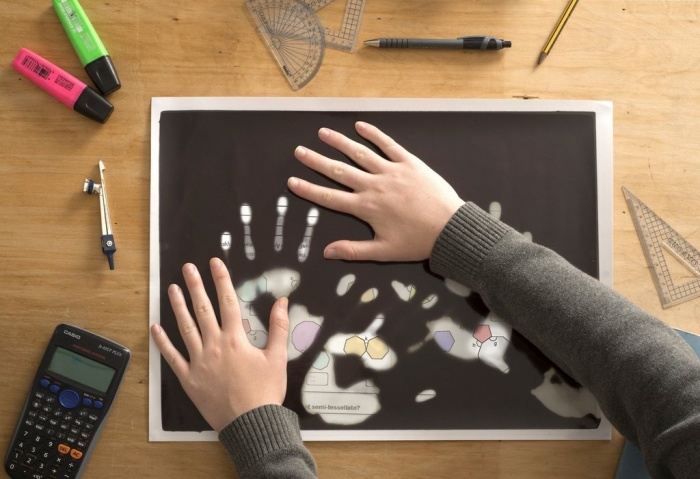Thermochromic
Thermochronic
Thermochromic inks or pigments change state in the presence of heart.
Once they reach temperature, the inks become colorless pigments can be mixed with different substrates like paint, glue, resin, Polymorph, Sugru, etc.
Thermochromic pigments start to vanish at 29°C by the time it reaches 31°C it turns translucent,
returning to normal when the temperature reduces.
{{#ev:youtube|https://www.youtube.com/watch?v=q_LFXGXZvUk&feature=emb_title}}
You can buy them online:
https://www.sfxc.co.uk/collections/thermochromatic-thermochromic-pigments-ink-paint
https://hgdipping.nl/shop/webshop/58-62/Thermochromic-pigments
Example projects:
{{#ev:vimeo|https://vimeo.com/138025527}}
2.[tapestry changes colour in response to Wi-Fi signals] {{#ev:youtube|https://www.youtube.com/watch?v=7-vZllNIZAk&feature=emb_logo}}
3.[Dynamic Skin]
{{#ev:youtube|https://www.youtube.com/watch?v=i7CPlyT0GyY&feature=emb_logo}}
4. [T H E U N S E E N selfridges]
Variables:
During thermochromic ink or pigment application, there are few variables affect the outcome and the appearance of the textile.
Let's take a look.
1. what amount of pigment will you use?
if you have a higher ratio of pigment to base, it may take more time and/or energy to change.
2. base color: what will you mix it with?
Different bases will affect transformation time. You can combine different colors to create different effects.
3. What material will you apply it too?
For example, the tracing paper reacts more quickly than canvas.
4, How will you apply it?
Paintbrush? Silkscreen? the uniformity will determine how evenly it changes.
5. What is the room temperature?
if the room is already warm, it will impact your pigment(e.g. hot summer is not the best time for the Thermochromic projects).

